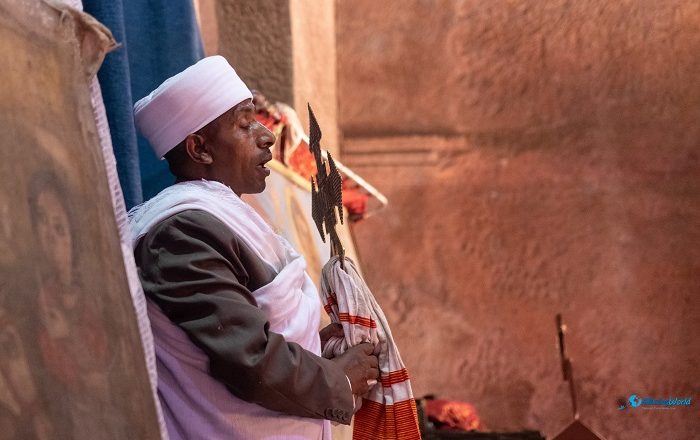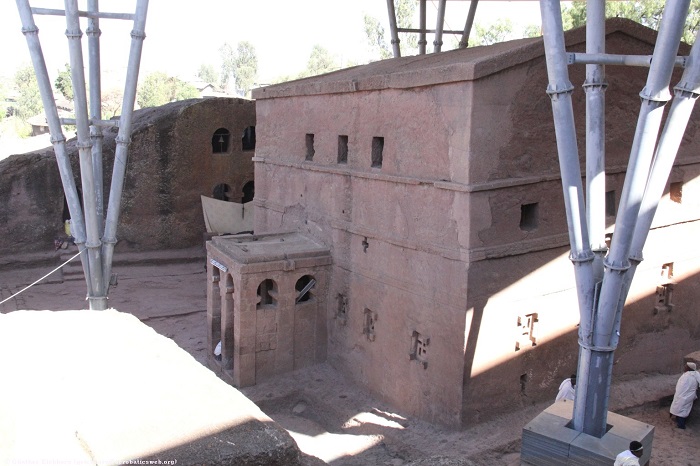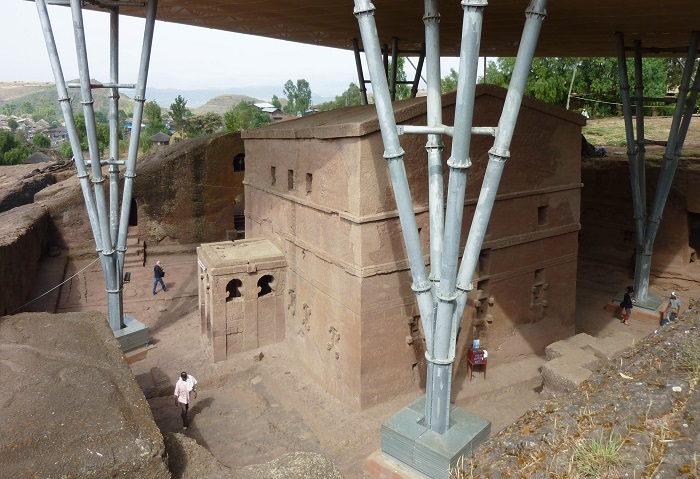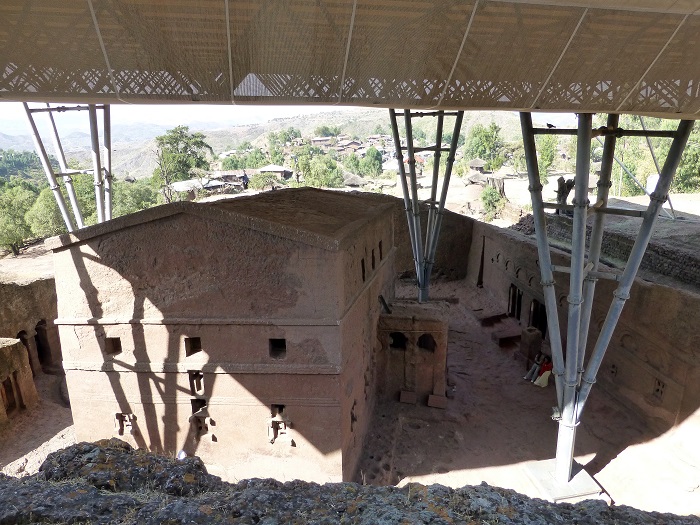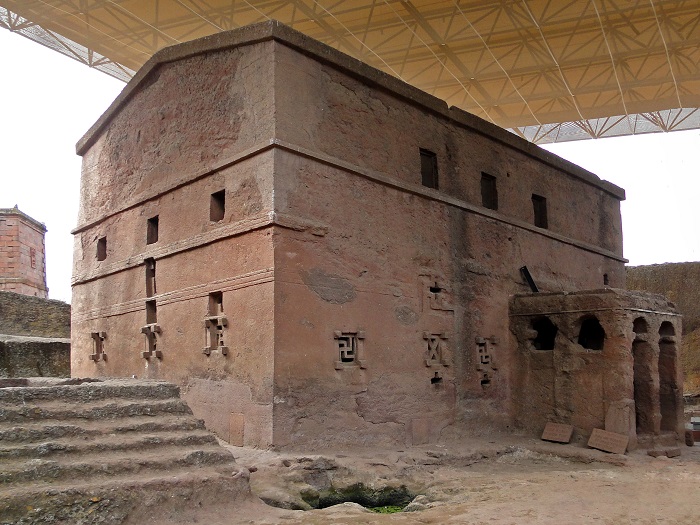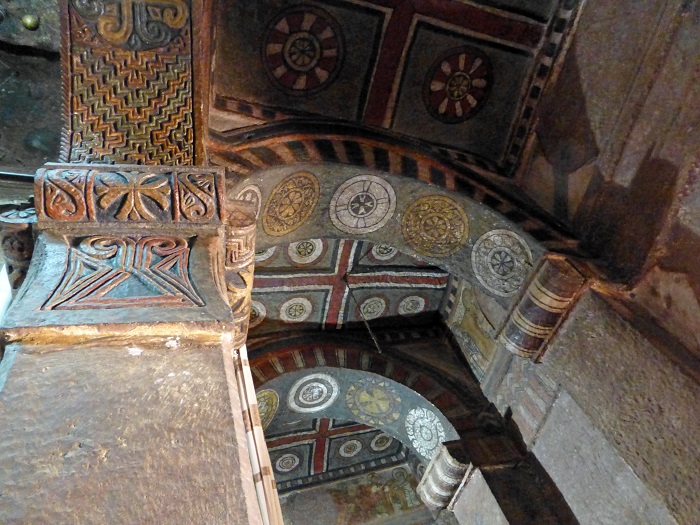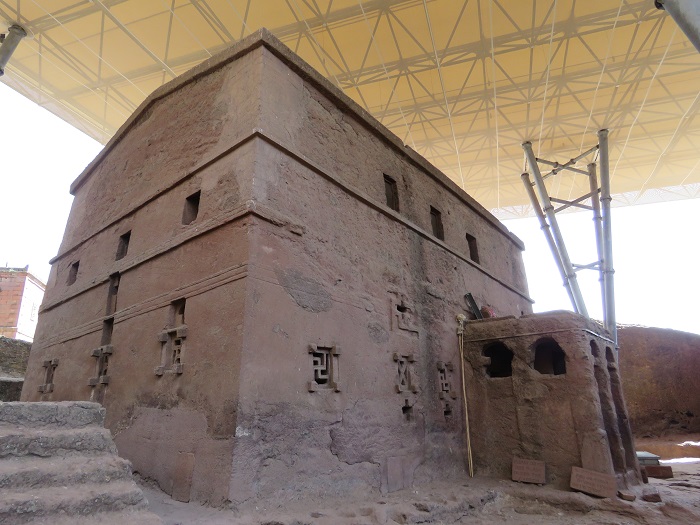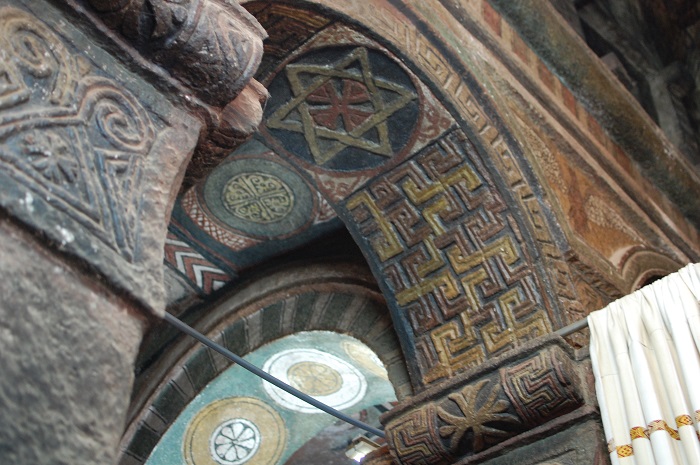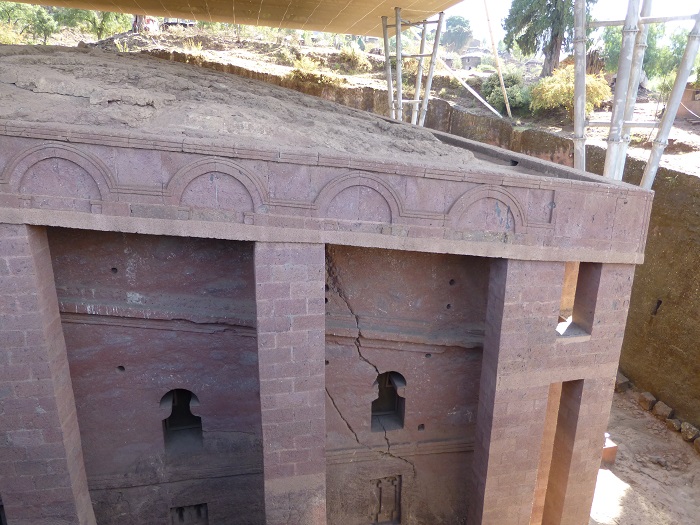Biete Maryam is a monolithic rock-cut Rock-Hewn church from the group of churches that can be found near the town of Lalibela, in the Amhara Region, within the northern part of the Federal Democratic Republic of Ethiopia. Being one of the most remarkable rock-hewn churches in Lalibela, Biete Maryam stands as a testament to the devotion and architectural ingenuity of the medieval Zagwe dynasty. Nestled in the northern highlands of the country, this extraordinary church is part of the UNESCO-listed Lalibela complex, which is a sacred pilgrimage site for Ethiopian Orthodox Christians. Carved entirely from a single block of volcanic rock, Biete Maryam, or House of Mary, is the oldest and most revered of Lalibela’s eleven monolithic churches, reflecting a deep spiritual and artistic legacy.
Built in the late 12th or early 13th century, Biete Maryam was commissioned by King Lalibela, who was a king from the Zagwe dynasty, to be part of his grand scheme to create a “New Jerusalem” for Ethiopian Christians. At a time when pilgrimage to the Holy Land was dangerous, the king wanted to create a sacred alternative, where pilgrims could achieve spiritual fulfillment without having to leave Ethiopia’s borders. The construction of this great church was as much an act of political ambition as it was of faith, securing the king’s authority while providing a sanctuary for religious worship. The design of Biete Maryam is intensely symbolic, its architectural elements expressing biblical references and religious customs.

The church itself is rectangular, placed in a sunken courtyard enclosed by high rock walls. It features a series of blind arcades, carved columns, and a richly decorated façade, with cross-shaped windows through which soft light hugs the interior. The plan is believed to have been based on the ground plan of Aksumite palaces and early Christian basilicas, incorporating native Ethiopian features with religious motifs of the Near East.
The construction process of Biete Maryam was an engineering feat, requiring immense labor and precision. Unlike traditional buildings, which are constructed upwards from the ground, this church was excavated downwards from the volcanic tuff, a process that required careful planning as well as expertise. Good-looking laborers and artisans carved through the stone, fashioning not only the exterior walls but also the interior chambers, columns, and altars, all from a single continuous block of rock.
The entire Lalibela complex, within which the most famous is the Church of Saint George, including Biete Maryam, is estimated to have taken over two decades to construct; an astonishing achievement considering the tools and techniques used at that time. What makes Biete Maryam unique is the spirituality and artistic richness that has been poured into its walls.
Inside, the church is adorned with subtle remnants of frescoes, delicate carvings, and symbolic patterns, including intricate crosses and flower motifs. The baptismal font, found in the courtyard, is said to have miraculous water which blesses those who bathe in it, and the atmosphere inside the church is profoundly serene, with the dim light of the interior contributing to the sense of mysterious sanctity. Pilgrims and visitors usually mention being overwhelmed with the feeling of respect upon entering, as if entering a different era of spirituality and devotion.
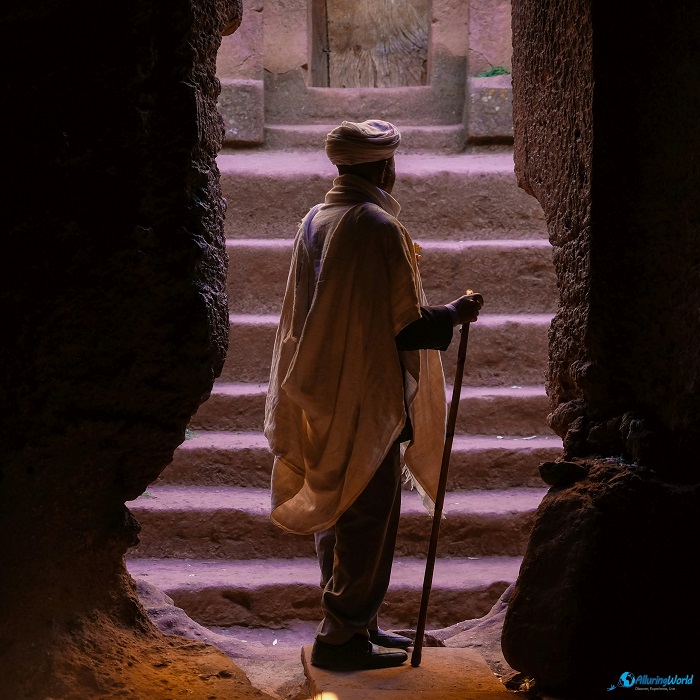
During construction, Biete Maryam was a center of religious instruction and prayer, drawing monks, priests, and believers from across the Ethiopian Highlands. It was a central element in consolidating Christianity within the region, solidifying the spiritual and cultural identity of Ethiopia, and even today, it remains a living center of prayer, pilgrimage, and monasticism, continuing to inspire generations of believers. Each year, thousands of Ethiopian Orthodox Christians travel here, especially during religious celebrations such as Genna (Ethiopian Christmas) and Timkat (Epiphany), when the church is filled with processions, hymns, and ancient liturgical ceremonies. For all who want to visit Biete Maryam, the trip is both rewarding and life-changing.
The church is located in Lalibela town, and local flights to Lalibela Airport from Addis Ababa with a subsequent scenic drive on the Ethiopian rugged highlands make it possible to visit. The best time to visit this magnificent object is from October to March because the weather is better during these months compared to the extremely hot and dusty weather in other months. There are guided tours, which provide the visitor with a treasure trove of information on the history, the myths, and the religious significance of the site, enhancing the experience through centuries-old tales, and all visitors are encouraged to dress modestly in respect for the holy nature of the church and to sit back and observe the silent devotion of pilgrims who come to pray here.
In conclusion, Biete Maryam is not merely an architectural wonder; it is a living legacy of faith, endurance, and artistic excellence. As one of Ethiopia’s most sacred spiritual pilgrimage sites, it continues to attract those who are drawn to history and sanctity both, so the quiet power of its stone walls, the echoes of prayers that have resonated for centuries, and the unwavering commitment it inspires make it an absolute must-see for anyone who is drawn to the grandeur of holy places.

